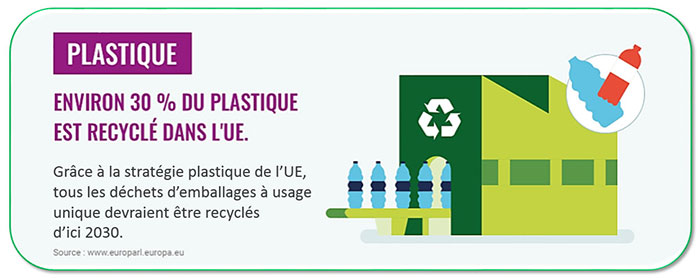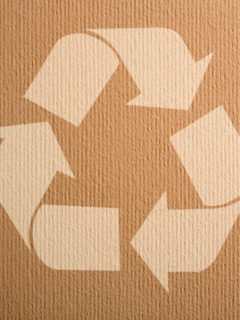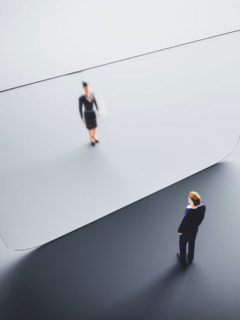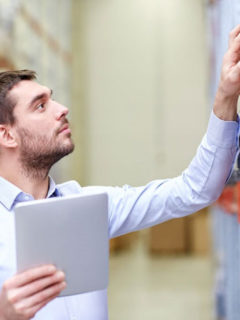Sustainability, ecology, green packaging… All of these terms are closely related to what we call the ‘circular economy’. Today’s waste is tomorrow’s raw material.The 5 waste streams we discuss below form the core of this cycle.Companies are encouraged (and to some extent even obliged) to sort and recycle them.In this article, we’ll go through some facts and give some tips to help you stay on track.
Circular waste streams: a new life for industrial waste
The following waste streams are “circular”. This means that these materials – after recycling – form the basis for new products. In this way we complete the raw material cycle: we use as many existing raw materials as possible, without having to tap into new sources.
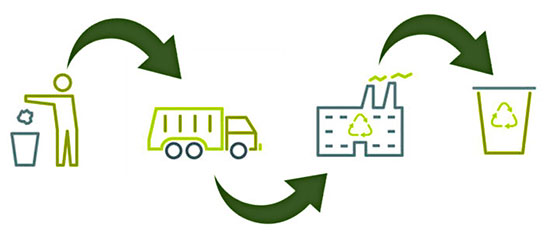
► Paper & cardboard
The first waste stream we will look at is paper and cardboard. Despite the development of digital technology, paper is still very popular, accounting for between 50% and 75% of office waste. Cardboard, on
the other hand,
is one of the most important materials in the packaging industry. It is an indispensable part of our daily lives.
We can think of paper and cardboard as both a finished product and a raw material. Once used, they can be easily recycled and returned to the paper industry. Paper can be recycled up to 7 times
on
average
- 70% is used for the production of graphic paper (newspapers, notebooks, etc.) ;
- 20% ends up in cardboard packaging;
- 10% is used for other purposes(toilet paper or insulation products).
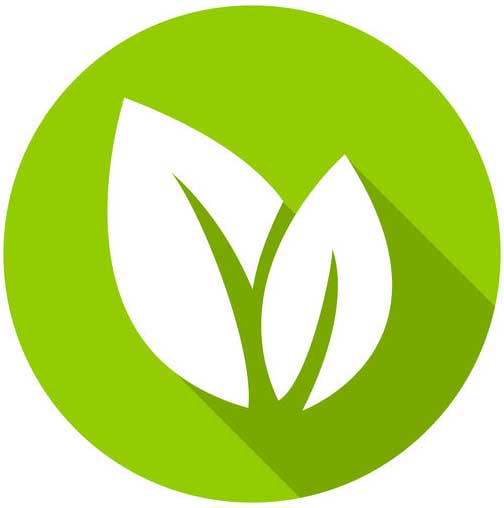 Cardboard = 100% renewable and recyclable. Made of at least 70% recycled material at RAJA. A cardboard box can be recycled up to 10 times.
Cardboard = 100% renewable and recyclable. Made of at least 70% recycled material at RAJA. A cardboard box can be recycled up to 10 times.
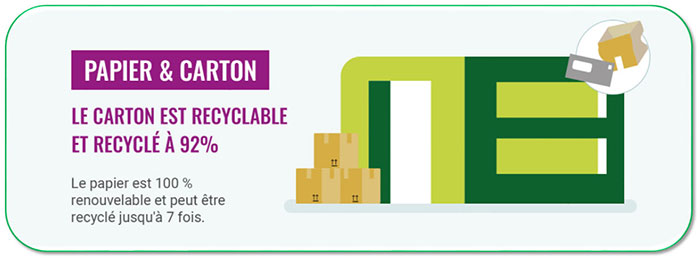
► Metal
Metals are real heavyweights in the world of recycling. And you can take that literally as well as figuratively. They can be recycled indefinitely, without loss of quality. Metal packaging should be disposed of in the PMC1 bag. After sorting, it is divided into 2 categories
- Ferrous metals: with iron as the main component (including steel). Examples: cans, tins, biscuit tins, etc.
- Non-ferrous metals: copper and aluminium. Examples: ready meals, aerosols, etc.
there are
clear benefits to metal recycling, it’s a real win-win: every tonne of recycled aluminium saves 95% of the energy needed to produce the raw material. And up to 85% of the energy for every tonne of recycled steel. That equates to a big reduction in CO2 emissions.
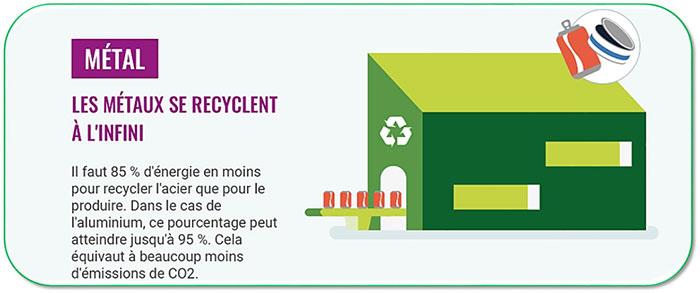
► Glass
Comme le métal, le verre est une matière 100 % recyclable. Il a donc une durée de vie presqueinfinie2. En utilisant du verre recyclé, la verrerie utilise jusqu’à 25 % d’énergie en moins pendant le processus de fusion. En Belgique, on estime qu’environ 90% du verre est collecté – un des pourcentages les plus élevés d’Europe3.
Savez-vous que le verre est trié plusieurs fois ? Le premier tri mécanique enlève tous les éléments métalliques (par ex. les couvercles). Vient ensuite le tri optique : un faisceau infrarouge élimine les éléments non transparents et non recyclables. Pour finir, un soi-disant cyclone enlève les derniers éléments avant que le broyage et la fusion ne commencent.
Remarque importante : lors du tri, il est nécessaire de séparer le verre coloré du verre non coloré. Seul le verre non coloré peut être utilisé pour fabriquer de nouveau du verre non coloré.
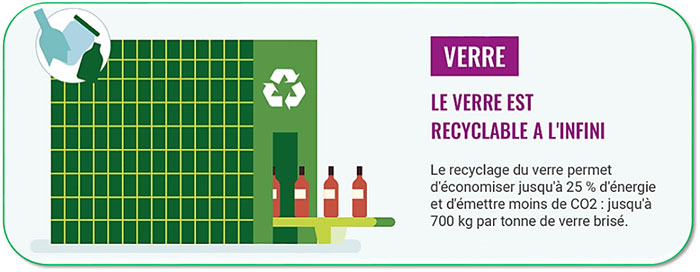
The raw material that keeps on growing: wood! Depending on their characteristics, wood waste streams are divided into several categories. The trade refers to A, B and C wood, depending on the quality
- Wood A = untreated (e.g. raw wood, boards, pallets)
- Wood B = uncontaminated treated wood (e.g. doors, tables, cabinets)
- Wood C = contaminated treated wood (e.g. impregnated wood)
a- and B-grade wood is processed into wood chips. About 75% of this material is used as raw material for the production of particleboard, pallets, briquettes, etc. The remaining 25% is used as green fuel for electricity generation. C-wood is not used for recycling, but is decomposed in an environmentally friendly way.
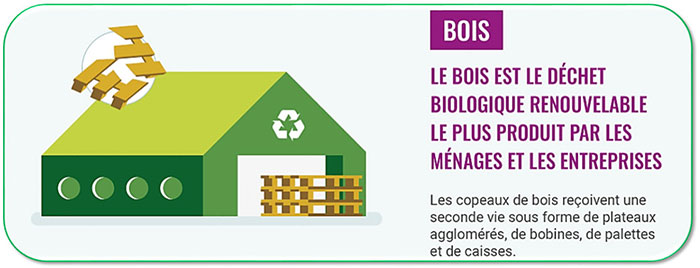
► Plastic
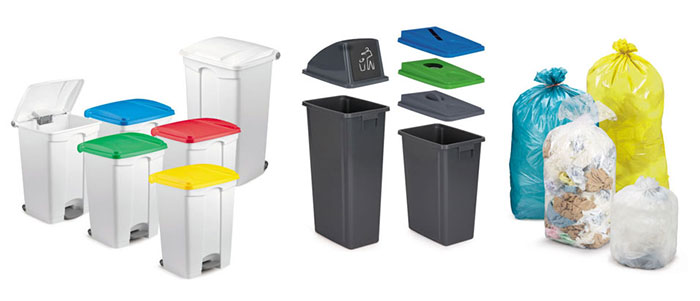
De tous les flux de déchets de base, le plastique est actuellement celui dont le taux de recyclage est le plus faible. La Belgique se porte plutôt bien par rapport aux autres pays européens. En matière de tri (bouteilles PET et flacons), on peut même dire que nous sommes champions (82 % en 2017, Fostplus)4.
Les plastiques doivent être traités à travers différents processus de production. C’est pourquoi il est important de faire le meilleur usage possible du sac PMC. Vous trouverez de plus amples informations sur les règles de tri des sacs PMC sur le site Internet de Fostplus.
